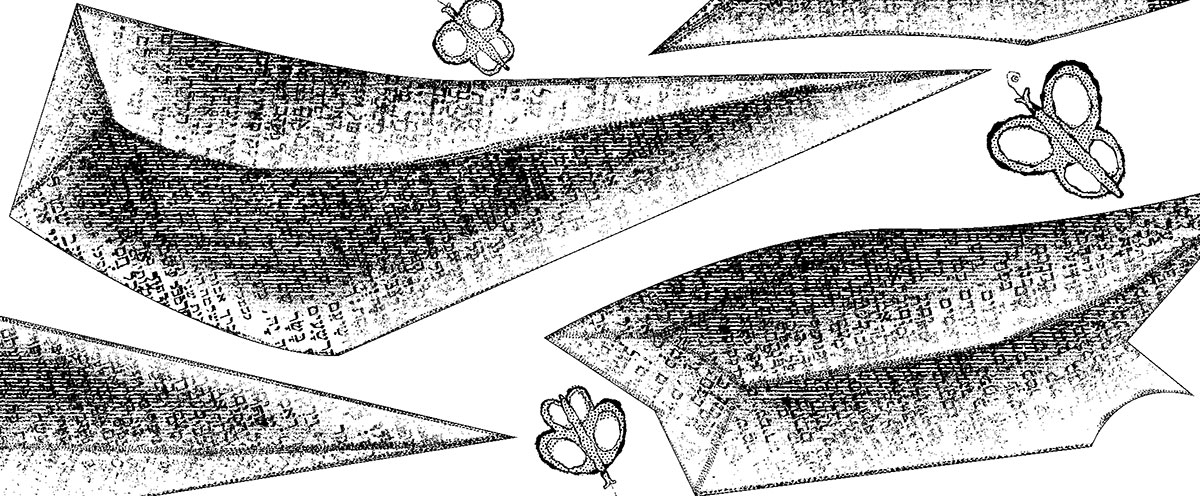
Of the thirty thousand runners running today, only one is made of glass. Only one could be shattered by a small stone. Of course, you can’t tell what the runner is made of; clothes, gloves, shoes, a hairpiece, and speed conceal him.
A video camera set up at the checkpoint. From early morning, a constant stream. A few event vehicles. Flickering lights. Race officials. And always, a stream of runners.
The runner passes into view. Octagons of light on the camera lens. The runner expressionless with concentration. The stone at chest level, moving forward as he moves. He has been chasing the stone since the race began, and finally he is gaining on it. The road sinks down and the runner’s speed increases.
No one knows the runner’s name. His chest touches the stone, and there is an explosion of light and gloves. The camera has been plunged into a whirlpool of clothes and broken glass. A hairpiece limp on the sidelines. A shoe behind a bush. The runner disappears.
It is as if someone has replaced the air with nails.
The shards of glass embed themselves in spectators watching from the sidelines. They do not notice the intrusion, so sharp are the fragments. They remain fixed on the race, their eyes scanning for family members and favourite runners. Tiny cuts speckle their bodies beneath their windbreakers; small abrasions mark their faces. The people take the glass home. They take the glass to restaurants and cafés, to homes and schools, to showers and doctors’ appointments. They take the glass to bed. They press the glass against the skin of lovers, children, co-workers, pets. Here, poochie-poo, come kiss Daddy. And the shards are passed on to Rover’s face.
While at work, a woman finds a piece of glass in her hand. She removes it. She is a research scientist and she examines the fragment. Iridescent edges, ridges the colour of eyes, fissures like sky light. There’s a pockmarked section that looks like Mother Teresa. But of course, she thinks, everything looks like Mother Teresa. At a higher magnification, there are butterfly-shaped indentations, and scratches like tiny drawings.
“C’mere, Bob. Look at this,” she calls to her lab technician. Bob sees Rhode Island, and scribbles that remind him of Hebrew.
“Are you sure? ” the scientist asks.
“Absolutely,” Bob says. “It’s my bar mitzvah portion. And there’s a bit that, if you sound it out, is an opening monologue Billy Crystal once did on Saturday Night Live.”
They take the glass piece down to the electron microscope. The scientist sees her parents lying side by side beneath its surface. They look as if they have been buried in a frozen river. Their small faces are peaceful, their hands clasped together. They are young. The scientist examines them closely. Her parents become younger. Soon they are boy and girl, and the father has no beard. His face is smooth and unwrinkled, and the mother’s body is slim as a child’s arm. The parents become younger still. They are infants curled beneath the ice. They are tiny pink ears, their fists not yet unfurled. The glass is a womb, and the scientist’s parents have become a single cell. The scientist calls out, but it is too late. They have disappeared, and the fragment of glass is empty.
The cut in the scientist’s hand smarts.